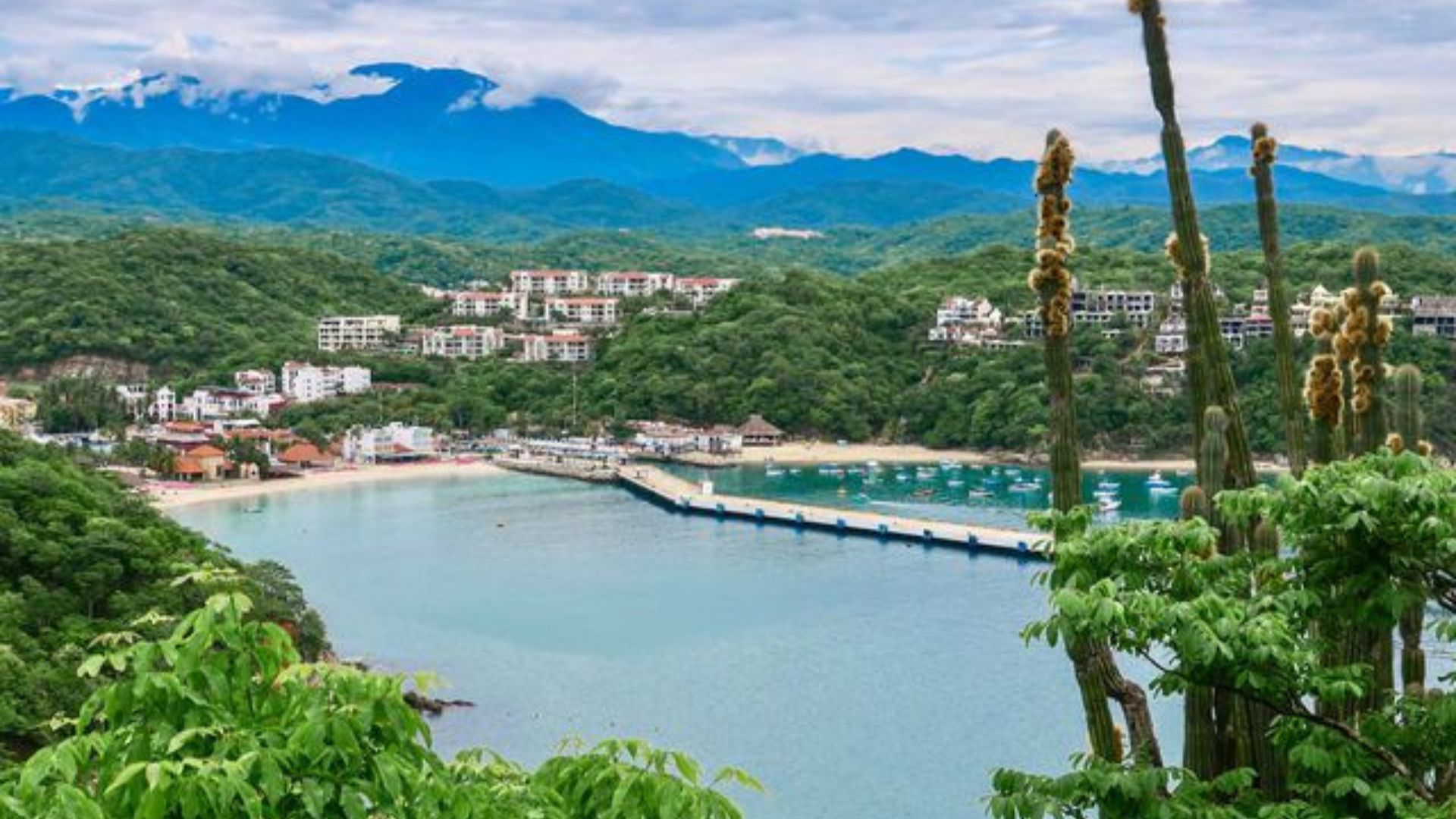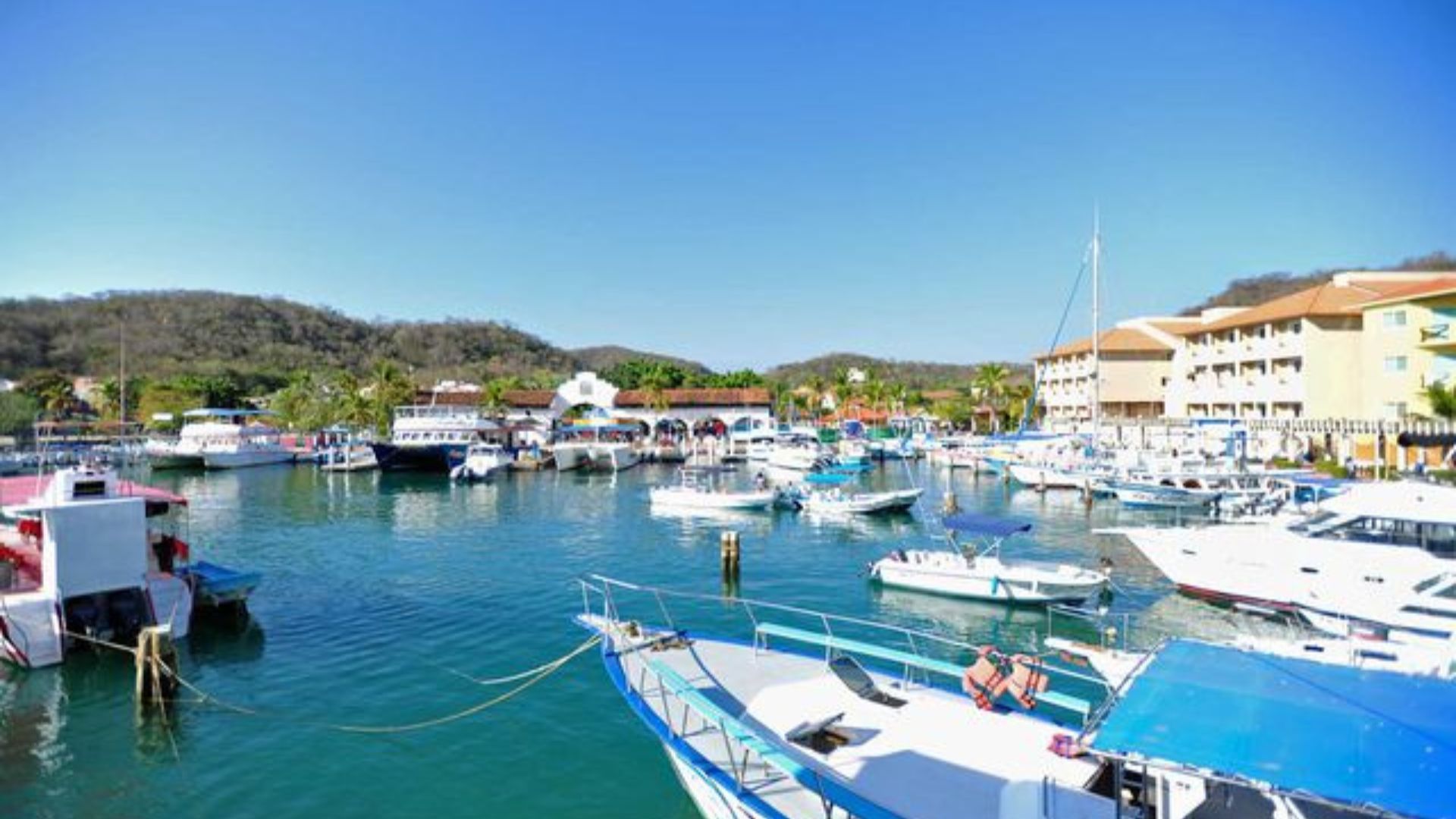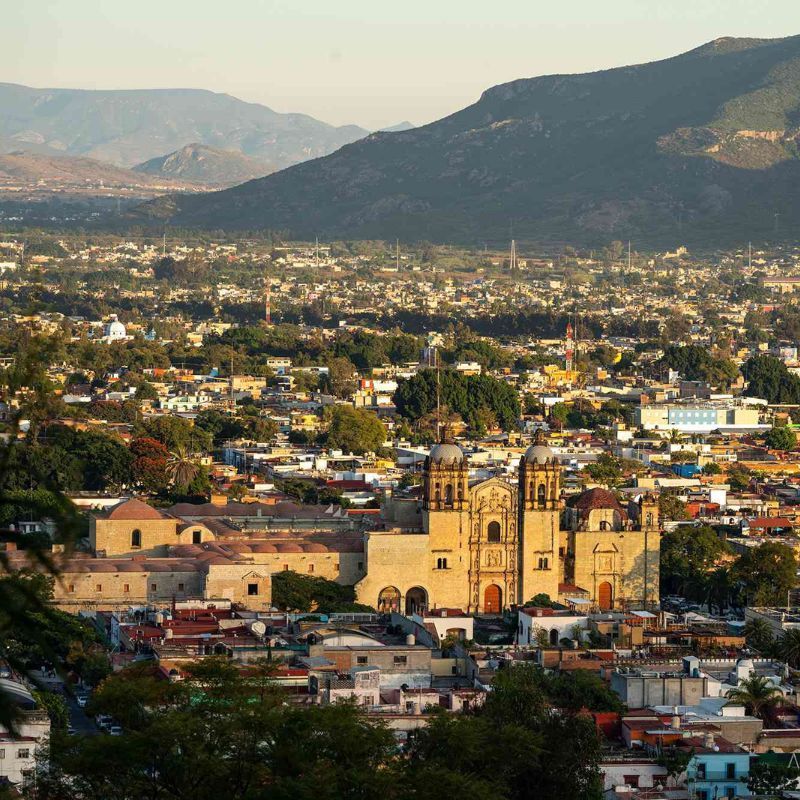
Huatulco, Mexico, is not so much a single destination as it is a region. The actual name for this area along the rugged Costa Oaxaquena is Bahías de Huatulco, or Bays of Huatulco. That’s because this popular resort destination is spread across nine bays that carve the southern coastline of Mexico’s state of Oaxaca. Each one has its own distinct energy and vibe, but together the region serves as the perfect jumping-off point from which to explore the rest of wild, untamed Oaxacan coast.
Bahías de Huatulco has always existed as an undulating stretch of coastline with golden, crescent-shaped beaches, thick groves of languidly swaying palms, and a backdrop of the green Sierra Madre del Sur and Sierra Madre de Oaxaca mountains. A ribbon of zigzagging highway zips up the rocky face to take travellers by bus to the mountain capital, Oaxaca City.
But Bahías de Huatulco as a resort destination is fairly new. It was constructed about four decades ago by Mexico’s National Tourism Fund to become a tourist attraction, much like Cancun in Quintana Roo or Ixtapa in Guerrero. Though, unlike both Cancun and Ixtapa, you won’t find high-rise hotels or luxury shopping malls in Huatulco. Instead, the vibe here is more low-key, with giant swaths of land remaining protected to preserve the lush jungle environment.
After creating both the highways down the mountains from Oaxaca City and up the coast to fishing village-turned-surf mecca Puerto Escondido, it was decided that Bahías de Huatulco would be spread across nine different bays and feature 36 beautiful beaches, resorts, restaurants, boutiques, and ample outdoor adventures. The main bays of Huatulco include Santa Cruz, Chahué, Tangolunda, Conejos, San Agustin, Chachacual, Cacaluta, Maguey, and Órgano.
Today, it attracts everyone from surfers and backpackers to nature lovers, foodies, sailors, and those who never need more than a book and poolside chaise lounge. It’s a well-equipped home base from which to get out into the wilder side of Oaxaca, whether it’s exploring the many national parks in the area, swimming in bioluminescent bays, or exploring the bohemian beachfront villages nearby.
Here’s how to plan the ultimate trip to Bahías de Huatulco.
How to travel to Huatulco
For being on one of the more untravelled coasts in Mexico, Bahías de Huatulco is well-connected. The easiest way to get there is to fly into Bahías de Huatulco International Airport. It has direct flights from Mexico City, Tijuana, and Oaxaca, as well as seasonal direct flights from Dallas, Chicago, Toronto, Calgary, Edmonton, and Vancouver.
You can also opt for the scenic route and take the ADO bus from Oaxaca City down through the mountains. The journey is roughly 10 to 12 hours of sharp switchbacks at heart-pumping speeds. Rest assured, though, the buses are safe and comfortable, with wide, plush seats that recline. To break up the trip, you can stop in the mountain village of San José del Pacífico and rent a wood cabin overlooking the mountains and forest for a completely different side of Oaxaca.
Where to eat, stay, and play in Huatulco

The Bahías de Huatulco encompass nine bays, though there are a total of 36 beaches across each, and much to do off the sand as well. Some bays are practically vibrating with activity, from the sailboats and catamarans pulling in and out of the marina to the live music spilling out into the streets from various bars and cantinas. Others are peppered with all-inclusive resorts and condominiums for rent. And then there are those that are sleepy at best, with just a string of palapa-covered seafood shacks, a toes-in-the-sand vibe, and zero cell reception. Unless you’re looking to go truly off the beaten path — and perhaps you are — the main bays are Bahía de Santa Cruz, Bahía Chahue, and Bahía Tangolunda. And if you’re not staying in one of the all-inclusive resorts on the beach, many people opt to make the inland town of La Crucecita their home base.
La Crucecita

Though not technically one of the bays of Huatulco, La Crucecita is one of the area’s main beating hearts. It’s closest to Bahía Chahue and Bahía de Santa Cruz. For all intents and purposes, La Crucecita is the primary meeting place for the Bahías de Huatulco. Here’s where you’ll find the majority of tour offices, the widest selection of restaurants and bars, the main town square, and many locally run boutique hotels. It’s easily walkable, and taxis are readily available to shuffle travellers back and forth to the farther-flung bays and beaches. La Crucecita is also one of the main entrances to Huatulco National Park, made up of tropical jungle, dry forest, and marine park. It’s a UNESCO Biosphere Reserve and a wonderful spot for kayaking, bird-watching, hiking, and horseback riding.
Where to eat and drink in La Crucecita
From backpacker bars slinging cheap shots of mezcal to refined haute Mexican cuisine on air-conditioned patios, La Crucecita is fairly good at catering to both ends of the spectrum.
Rocoto, for example, is a hidden gem serving up fresh seafood highlighting traditional Mexican flavours with a surprising Asian twist, like the tuna poke and mango Thai curry.
For succulent and hearty moles of every colour, El Sabor de Oaxaca hits the spot. Sitting at simple tables on a floor of terra-cotta tiles, colourful plates swirl with ropes of stringy Oaxacan cheese, crispy tlayudas, and bean-smothered sopes.
Or, you can blend in with the backpacker scene at La Crema Bar, washed aglow with black lights, and plastered with rasta-inspired decor. People come for the supremely strong drinks, a lengthy menu of affordable and tasty pizzas, and a nightly roster of live music.
Those seeking a vegan-friendly, juice-forward restaurant will find what they’re looking for at Agave, which serves healthy smoothies, cold-pressed juices, and abundant açaí bowls.
Where to eat and drink in Bahía de Santa Cruz, Bahía Chahue, and Bahía Tangolunda

At the entrance of Marina Chahue, the mobile Marea Alta draws visitors in for its stunning views over the marina. What keeps them, however, is the menu of delightfully fresh seafood.
For those wanting to sink their teeth into a seriously good steak, Finca de Vaqueros makes waves with its marinated flank steak, grilled sausages, and heaps of sides. For a taste of everything, the parrillada ensures you won’t leave hungry.
After three decades, Ve El Mar on Playa Santa Cruz has become nothing if not an institution. An all-day dining venue, this spot is humming with patrons snacking on succulent and regional recipes like chilaquiles, grilled octopus, fresh ceviche, and a whole fish that could feed the entire family.
Not far from the beaches of Bahía Chahue, Bladu’Yú focuses its entire menu on southern Oaxaca traditions from the Isthmus of Tehuantepec (picture corn tamales, fried chicken with onions and potatoes, and garnachas topped with meat, cheese, and pickled cabbage). The restaurant walls are splashed in bright vermillion and decorated with brilliant, larger-than-life paintings that feature scenes from traditional Oaxacan life.
Where to stay in La Crucecita, Bahía de Santa Cruz, Bahía Chahue, and Bahía Tangolunda
If you’re fine foregoing beachfront resorts, La Crucecita has dozens of charming boutique hotels that are within walking distance of all the activity in town. Mision de los Arcos is one of the classic options, just a few blocks from the main square. The bright rooms range from standard to junior suites, and many offer small terraces. It’s not exactly five-star luxury, but you can’t beat the location and comfort of the rooms for the price.
If you do prefer to stay beachfront, or at least overlooking the water, you may want to consider one of the resorts closer to Bahía Chahue, Bahía Tangolunda, or Bahía de Santa Cruz. Dreams Huatulco Resort & Spa sits on a picture-perfect stretch of golden sand. Its 421 rooms are all-inclusive, and each one has a balcony and plenty of natural light. Ask about which rooms offer ocean views and whirlpools. Other amenities include six pools, three of which have an infinity edge. The beach is also one of the resort’s most popular features, with a string of thatched palapas shading chaise lounges.
Perched atop the sugary stretch of Playa Chahue, with mounds of green carpeted mountains, Quinta Bella Huatulco has 44 rooms, seven restaurants, a spectacular oceanfront spa, and a full-service fitness centre. Quinta Bella is not directly on the beach, but lies a short five-minute ride away.
Overlooking Playa Tangolunda is the beachy and elegant Quinta Real Huatulco. The intimate resort, known for its lofty dome tops and handmade palapas, has only 27 rooms and spectacular ocean views. It’s not directly on the beach — a free shuttle provides service — but the rooms are simply stunning, with gorgeous marble bathrooms featuring relaxing hot tubs. Some rooms even have private pools.
Hotel Binniguenda Huatulco is much more centrally located to La Crucecita, though it’s technically in Bahía de Santa Cruz. The all-inclusive resort has 77 guest rooms, a long list of restaurants, a private beach club, and a spa.
Huatulco’s other bays and beaches
While Bahías de Huatulco has its mainstays and more popular areas, none of its bays are particularly far away. Taxis are safe and affordable, making it easy to hop from beach to beach. Bahía San Agustín, for example, is little more than an undeveloped stretch of gorgeous beachfront with a few seafood shacks and modest accommodations. You won’t find signature services here, unless all you’re looking for is a plate of supremely fresh ceviche and a cold cerveza.
Bahía Conejos is one of the furthest from La Crucecita, though a taxi ride is still just roughly USD 5 (HKD 39.23 approx). Be sure to mention you’re going to the public beach, not the Secrets resort. A short unpaved path leads to one of the most beautiful beaches in all of Oaxaca. You won’t find much in the way of services here, but its undeveloped ruggedness is what makes it one of the region’s most stunning.

If you’ve got the time and energy to keep the exploration going, the beach towns and natural attractions up the coast along Highway 200 are certainly magical. Towns like Mazunte and Zipolite continue to draw a bohemian-chic crowd to an endless array of beachfront restaurants, crystal shops, yoga studios, tattoo parlours, and juice bars.
Two hours from Huatulco is the thriving surf town of Puerto Escondido, which started as a bare-bones fishing village and is on the verge of exploding into one of the next hot spots for design hotels, gastronomy, and nightlife.
Beyond Puerto Escondido, natural wonders like the Laguna de Manialtepec are known for its bioluminescent bay, while the remoteness of Lagunas de Chacahua National Park beckons nature lovers to get lost on a boat ride through the thick mangrove canals.
This story first appeared on www.travelandleisure.com
Main and Feature Image Credit: Getty Images












